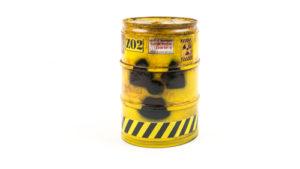

Type in “tanker truck chemical spill” into Google and the results go on for pages. This is obviously a very real and very dangerous accident.
On June 17, 2014 in the town of Sidney, Ohio, a chemical leaking from a tanker truck closed down Interstate 75 for a period of time and saw 5,000 people temporarily evacuated from their homes. The chemical was anhydrous ammonia, which is used as a fertilizer and is transported and stored in gas form. Although nobody was hurt in this incident, there may be soil contamination as safety crews trying to lessen the effect of the “off gassing” doused it with water.
The Federal Motor Carrier Safety Administration (FMCSA) is the arm of the Department of Transportation responsible for the transportation of dangerous goods. They have a list of shippers’ responsibilities, carriers’ responsibilities and have set up a list of guidelines for reporting incidents such as chemical spills. Read on to learn more.
What might cause a hazardous chemical leak from a truck?
The most obvious cause of a leak might be an accident that compromises the integrity of the container carrying the hazardous material. Truck driver error or a problem with the truck itself could cause the accident. Other drivers on the road could also cause accidents with a truck carrying dangerous goods.
But the truck in Sidney mentioned above was not in an accident. Another motorist flagged him down to inform him of the leak. As of a June 17 article from WDTN.com, the cause of the leak was unknown.
Other issues that might contribute to a chemical leak from a truck include:
- failure to inspect a tank or container;
- poor truck or container manufacturing; or
- mislabeling and misplacement of hazardous material in inappropriate container.
For a free legal consultation, call (614) 538-1116
What are the shipper’s and carrier’s responsibilities?
Federal Code 49 CFR Part 173 outlines the shippers’ and carriers’ responsibilities when transporting hazardous materials. Many of their responsibilities are similar and include employee training and properly filling out shipping papers. Shippers must identify the hazardous material and identify its class/division and identification number, and must include a hazard warning label. The carrier is also responsible for loading and unloading as well as incident reporting.
Parties that violate these responsibilities could be liable for damages if their actions or inaction leads to or contributes to an accident that causes injury and damages. A truck driver’s employer may be responsible as well if the driver caused the accident, such as by speeding or making other unsafe maneuvers.
Who might a toxic chemical leak from a truck harm?
Those involved in accidents with a truck carrying hazardous materials could be at risk of exposure. Others on the road could be at risk as well.
If the hazardous material is a gas, like in the accident mentioned above, people in the general area could be at risk. The officials in Sidney evacuated people within half a mile. If the chemical affects the groundwater, it might affect a great many more people if it gets into the drinking water supply for a community.
Toxic spills from trucks are more than a nuisance; they could have life-altering ramifications. If you have been involved in an accident with a truck carrying hazardous material, speak with an attorney at Bressman Law. Call us at (614) 538-1116 to set up a free evaluation of your case and legal options.
Call or text (614) 538-1116 or complete a Free Case Evaluation form








